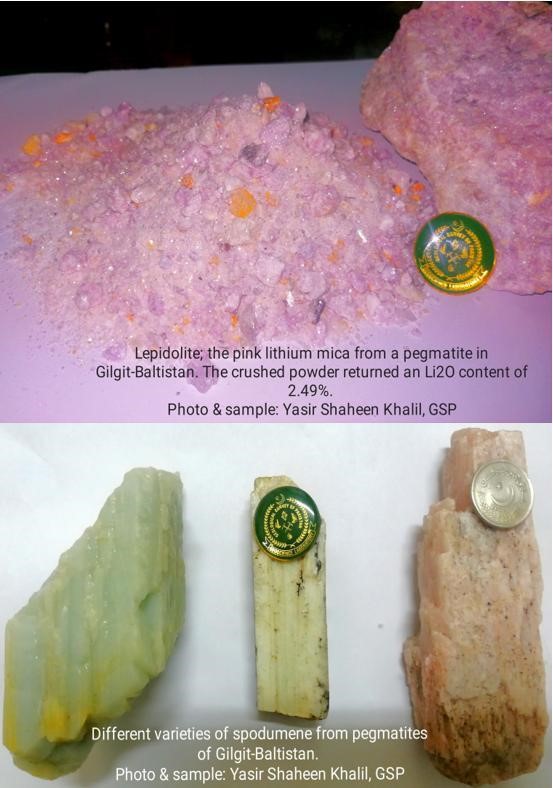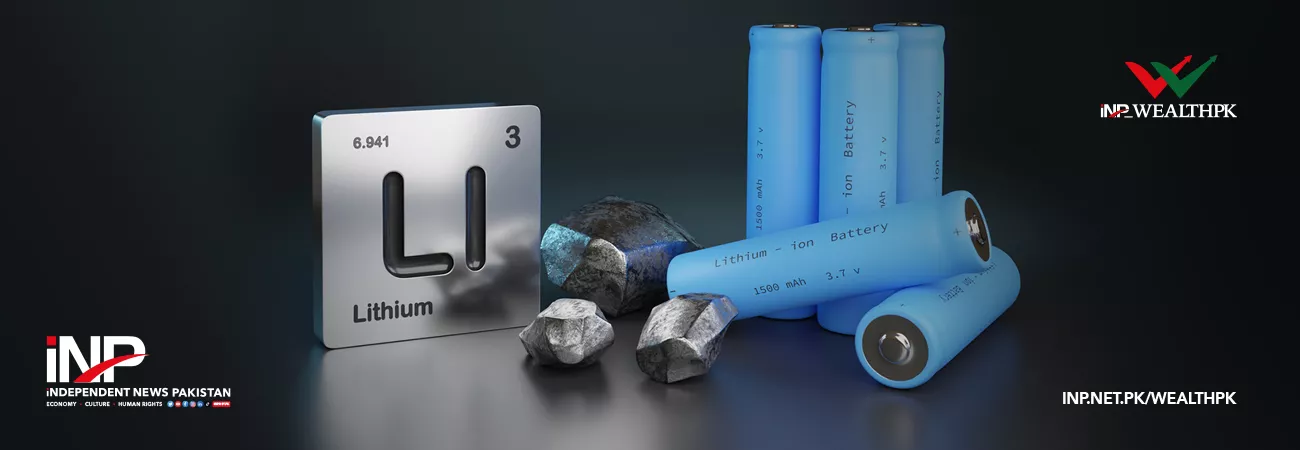INP-WealthPk
Faiza Tehseen
Pakistan direly needs to frame a proper policy to exploit its lithium deposits to support the economy. Lithium is the key component used in electric vehicle batteries. Due to its vast industrial uses, lithium is a versatile mineral for trade and business. It is used in multiple industries like flux additive for iron, ceramics, heat-resistant glass, energy system transformations, lithium grease lubricants, magnesium, and aluminium alloys, etc.
Its demand is very high for production of lithium batteries and lithium-Ion batteries to be used as electrodes and electrolyte material. It is used in both disposable and rechargeable batteries. It is also used in pharmaceuticals. Lithium salts have proven to be mood stabilisers, anti-depressants and healers of bipolar disorders.

The lithium market size in 2021 was worth $3.95 billion. To study the further development of this segment the same year was taken as the base year. The results showed that this segment by the year 2030 is expected to grow at the compound annual growth rate (CAGR) of 23.4% to $25.54 billion.
The demand for lithium is also expected to reach between three million to four million tonnes by the year 2030 from 500,000 tonnes in 2021. China dominated the market of lithium-ion battery production in 2021 by meeting 79% of the total demand worldwide. In 2022, the lithium price hit an all-time high of $77,000 per tonne.

Yasir Shaheen Khalil, an assistant director at the Geological Survey of Pakistan (GSP), during a discussion with WealthPK about the promotion of lithium, said in Pakistan, lithium has been known to occur in four types of geological environments that include rock-type, underground-brine, lake type as well as ocean water-related environments.
“The rock type includes lithium-caesium-tantalum (LCT) pegmatites that have been reported from Chitral in Khyber Pakhtunkhwa province and the Gilgit-Baltistan region. Underground-saline brine type is mostly associated with the oilfields of upper and lower Indus basin.” “Lithium in the lake-type brines (underground brine too but becomes lake during flooding) has been reported from arid lakes of Chagai in Balochistan and Cholistan-Thar deserts in Punjab and Sindh, and the south Punjab region.” “Other than the land sources, lithium is also extracted from oceans. It is also another extensive source of lithium in Pakistan. The saltwater source containing lithium may be considered viable if the concentration is 600 milligram per litre.”
Yasir Shaheen Khalil said Pakistan has yet to devise a proper policy to mine, process, refine and add value to lithium in Pakistan. “There is a dire need to frame proper policies concerning the classification of our mineral resources in different categories i.e., restricted minerals, priority minerals and strategic minerals. A long-term plan is needed to make our mineral exploration and exploitation activities in line with our industrial, agricultural and other domestic demands. It will help drive the mining sector in a proper direction. This will also help invite the investors under different policies – public-private partnership, private leasing, foreign direct investment.”
Imran Babar, a geologist and miner, while sharing his views with WealthPK about the lithium mining in Pakistan, said a big stock of lithium was found in Siachen in the north, Waziristan in Khyber Pakhtunkhwa and Chagai. “But the absence of proper mining and safety material is depriving the country of getting proper benefits from this mineral.” He said public-private partnership is crucial for mining lithium. Pakistan can get technical assistance from China to promote and add value to this mining segment.
Credit: Independent News Pakistan-WealthPk




